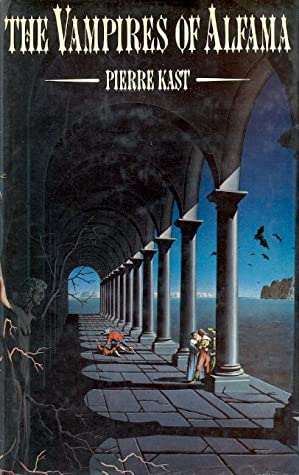 By PIERRE KAST (W.H. Allen; 1975/76)
By PIERRE KAST (W.H. Allen; 1975/76)
A most interesting and unprecedented addition to vampire lore from the French filmmaker and sometime novelist Pierre Kast. This novel was written, according to a prefatory note, to “re-create the color of the eighteenth century, the color and above all the architecture of Portuguese baroque.” In that endeavor Kast has succeeded, creating a “Portugal of fantasy, let us say of a dream” that is first and foremost richly descriptive and picturesque. THE VAMPIRES OF ALFAMA is only 181 pages long, but in historical detail and imaginative richness it actually outdoes the alternate history vampire epics (such as EMPIRE OF FEAR and ANNO DRACULA) that came later.
This dream Portugal, in which actual historical figures like Giacomo Casanova figure, details “a history parallel with real history” set in the mid-eighteenth century, in which the Alfama region of Lisbon becomes infested with vampires. These vamps, however, are the good guys, opposed by a corrupt Establishment that utilizes fear and intimidation to maintain its rule.
Leading the vampires is the ancient Count Kotor, who’s engaged in a centuries-long quest to create an elixir that will confer immortality. He of course already possesses the means of bequeathing eternal life, with vampirism viewed here as a supernatural gift—albeit one with a number of drawbacks, chief among them persecution by a suspicious and insecure ruling class.
That ruling class is presented as a scheming bunch of scumbags who view the vampires of Alfama as both existential threats and convenient scapegoats for a gullible and superstitious populace. Amid a debauched atmosphere of erotic shenanigans and political maneuvering, a ruthless campaign is carried out by the minister of police to rid Alfama of its undead “threat” via intimidation, public chastisement (with white crosses painted on the doors of vampire occupied houses) and, ultimately, mass slaughter.
A fantasy this may be, but the parallels between the events described in these pages and the real-life horrors of the Twentieth Century are impossible to ignore. Yet the book also has a romantic angle, with human-vampire couplings abounding, and providing an extremely moving and grotesque climax (involving true love and a very sharp stake) that far outdoes the double suicide that concluded ROMEO AND JULIET.
